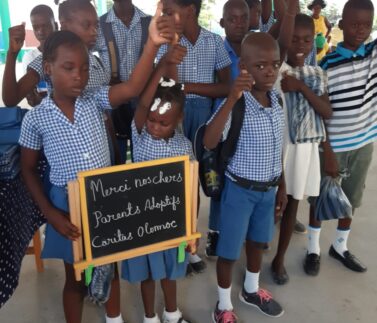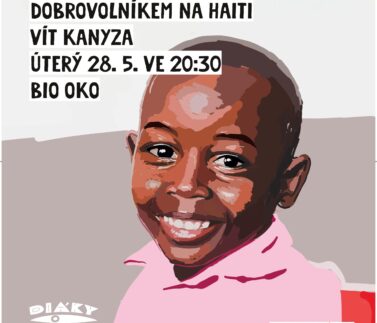
Charity in Haiti: protests, earthquakes, 368 treated poor
Haiti, Olomouc – Almost 370 treated poor Haitians, a visit to a sewing workshop where seamstresses sew on pedaling machines from the Czech Republic, meetings with schoolchildren supported by Czech donors, as well as earthquakes or protests with burning barricades. Klára Lőffelmannová, an employee of the Archdiocesan Charity Olomouc (ACHO), and a doctor Josef Marada, experienced all of this during their one-month stay in Haiti. Now they’re back. “When the ground was shaking, I first felt fear in Haiti. And what is the current situation there? People are proud to be independent (Haiti was the first colony where slaves arose and won their freedom), but they are entirely dependent on helping the neighbourhood. They need support in education, agriculture, health, … The Haitian government does not care for people, nor can they provide basic needs, so the country is still rioting,” says Klára Lőffelmannová about her last mission in the unstable Caribbean country.
The gap between fabulously wealthy and life-like ordinary people in Haiti is increasing. “There is no middle class in Haiti. In addition, a small island where there is no mineral wealth, political instability, poverty, disease and natural disasters, is not a country that pays great attention to the world. Our help is directed to specific people so that they can take care of themselves. With the help of generous Czech donors, we are doing well in selected locations,” the humanitarian worker continues. Everything started with the educational Child Sponsorship project and Humanitarian Aid after disasters, then Caritas expanded its assistance with annual health camps, shelter construction, sewing workshop support and many more.
Valerie will soon support herself and three children
Thirty-year-old Valerie of Gonaïves, for example, now makes a living for her whole family. She and her husband have two sons and a daughter. Two years ago, she came to the Center of St. Joseph (which is also supported by ACHO), saying that she wants to learn to sew. “Valerie didn’t know anything at the beginning. She started learning skills, making small jute cups, then sewing small cases, cases and handbags. She improved herself quickly, and now she can make a cut on her skirt, blouse and dress… And what’s more, she has a job,” explains Klára Lőffelmannová, one of the many stories of people who could improve their lives and their family. Valerie, with five other seamstresses selected, will get a job at the planned factory, where they will sew clothes for the US market. The factory is to be established in cooperation with American partners near the Center of St. Joseph in Gonaïves. ACHO now supports a sewing workshop in the Gonaïves centre, where 15 seamstresses are taught on Lada and Minerva pedaling machines. Caritas sent them to Haiti in a container with the help of donors from all over the Czech Republic in autumn 2017.
Things from the Container for Haiti still help in schools (computer room in Gonaïves, desks and chairs in Gonaïves and Baie de Henne, school backpacks, exercise books, school supplies), and then in the Center of St. Joseph (lockers, chairs, Tatra toy car for children in the nutrition center and others).
During the mission, 368 poor Haitians, mostly children, were inspected and treated. Josef Marada, a young doctor from Zábřeh in the Czech Republic, treated needed in the northwest of the country, in Baie de Henne (237 children and 11 adults) and Gonaïves (60 mothers and their 60 children coming to the nutrition centre). He also distributed vitamins and toothpastes with the ACHO humanitarian worker, who also transported them to Petit Anse and to the south of the country to Roche-a-Bateau. Companies and their customers from Olomouc, Zábřeh, Hranice and Svitavy contributed to the health check-ups in the Haiti Health Campaign. “Haitians are glad for your help. They say hello to the Czech Republic and thank you,” says Klára Lőffelmannová to the donors.
Except for Haitian protests, which unfortunately even die, people of the Archdiocesan Charity Olomouc have experienced an earthquake in Haiti, less than a week after their arrival. Unfortunately, 15 people died in the earthquake, over 330 injured. The earthquake epicentre was located in the north of the country in Port au Paix. “At that time, we worked in the capital, but even there we felt the tremors. This was then repeated in much greater intensity as we headed north to Gonaïves. In addition, the nurses from the centre said that the previous day the earthquake was accompanied by a heavy noise as if the truck was moving underground,” says Klára Lőffelmannová. In the event that the earthquake recurs, the pupils in all schools were given the following day free time as well as advice on how to behave during the disaster. Step out of the building into the open air or resort to a bearing wall.
Karolína Opatřilová, ACHO



